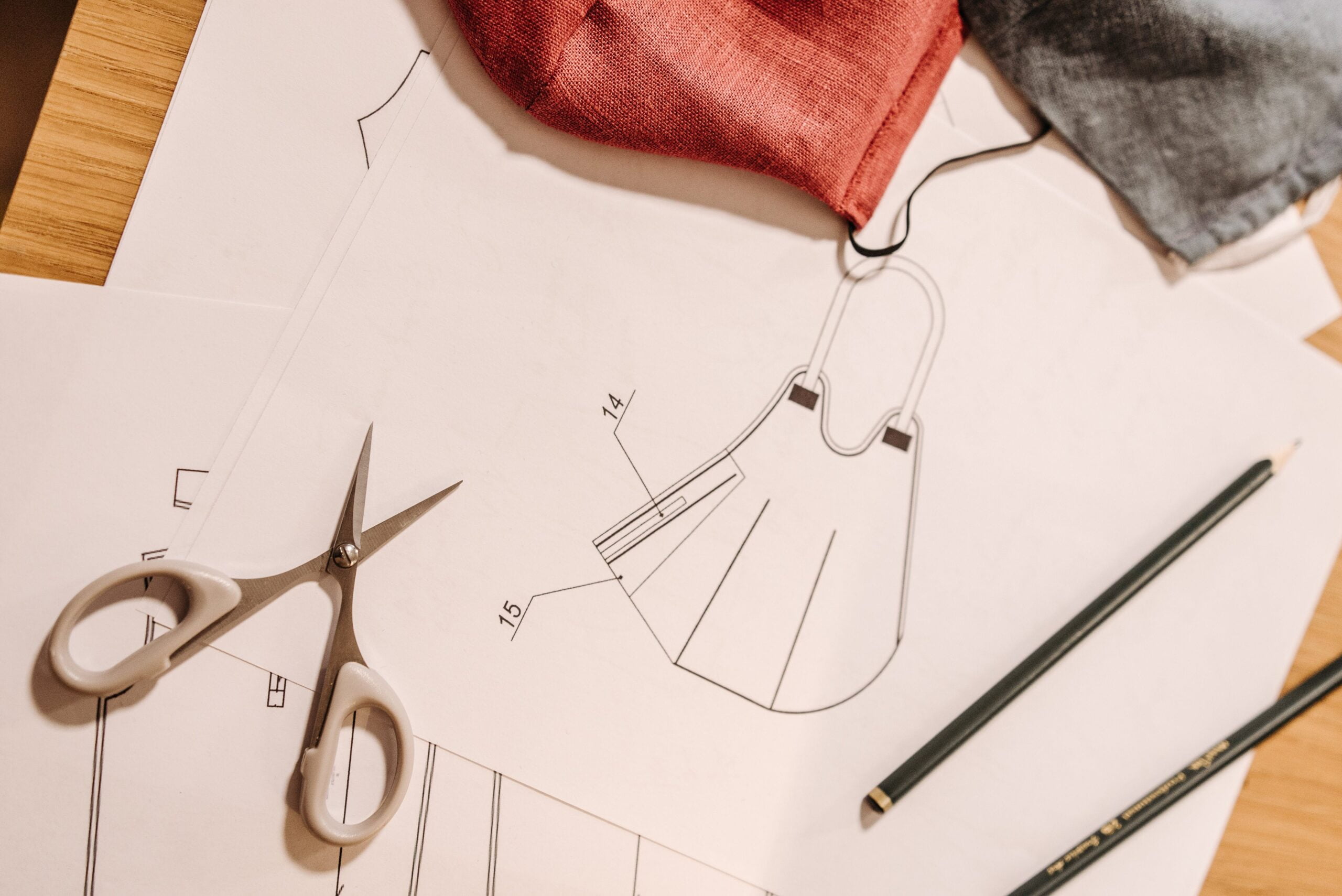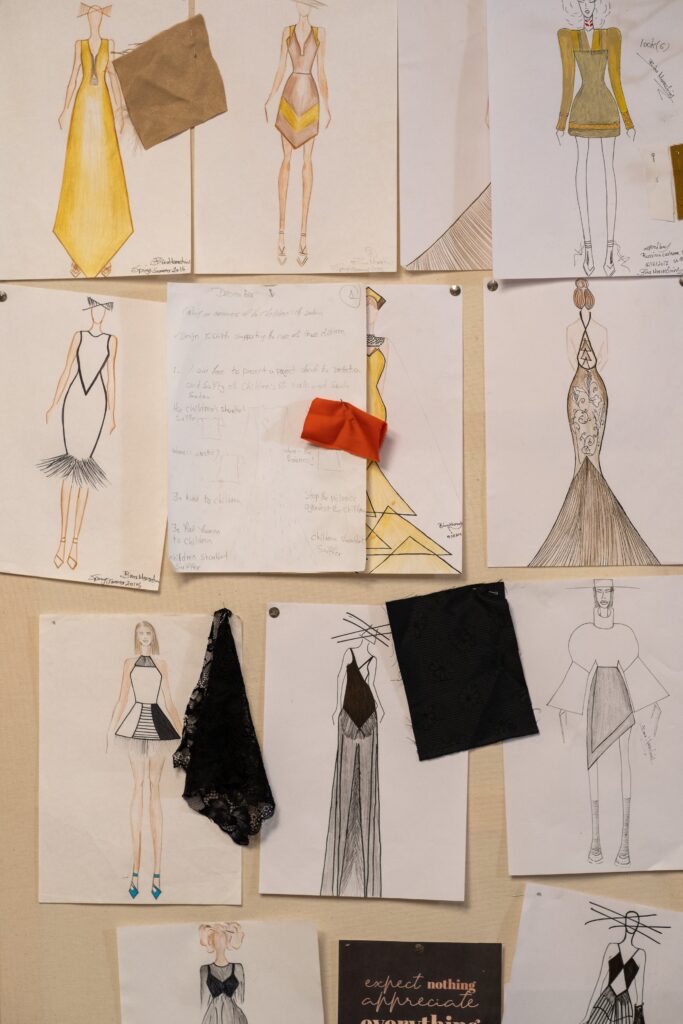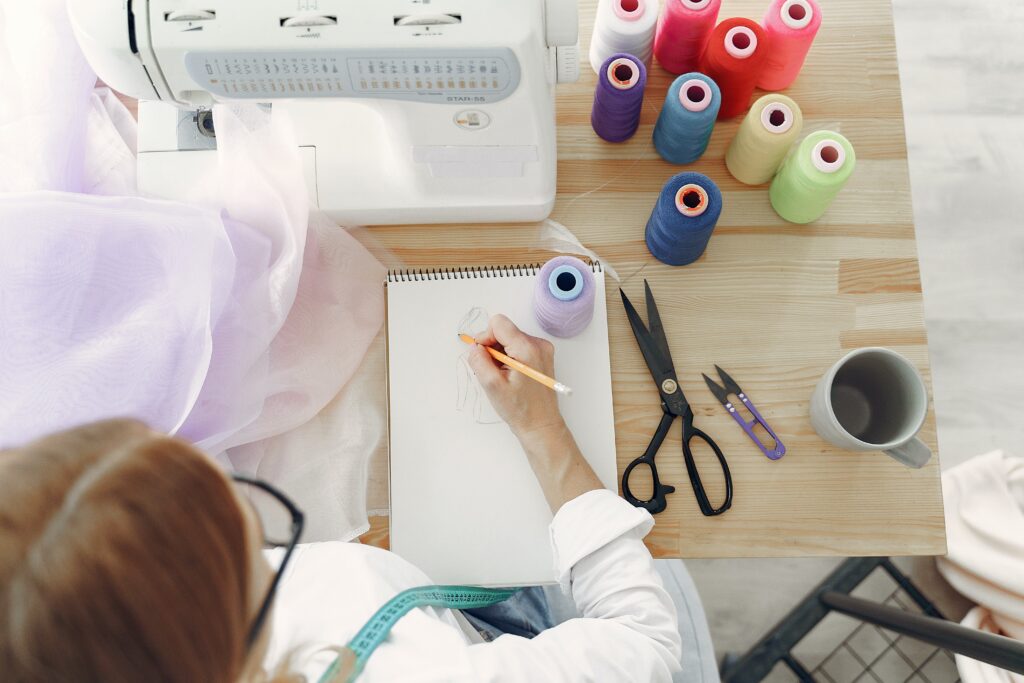Innovative Fashion Sketching Techniques:
Innovative Fashion Sketching Techniques in Fashion industry is a dynamic and ever-evolving field that thrives on creativity and ingenuity. In recent years, the art of fashion sketching has undergone a transformative journey. Embracing innovative Fashion Sketching Techniques that redefine the traditional canvas. From digital tools to 3D modeling and sustainable practices, designers are exploring new horizons in the world of fashion illustration.
Introduction
Fashion sketching is the initial and fundamental expression of a designer’s vision, translating abstract ideas into tangible concepts for garments. As the fashion industry undergoes transformations, so too does the art of sketching. Innovative approaches in fashion sketching extend beyond traditional methods, embracing technology, sustainability, and experimentation.
The integration of technology has revolutionized fashion sketching, with designers utilizing digital tools, virtual reality, and artificial intelligence to enhance their creative process. This shift allows for more precise visualization and detailed rendering, enabling a closer alignment between concept and execution.
Sustainability has become a focal point in fashion, influencing Fashion Sketching Techniques. Designers now prioritize eco-friendly materials and ethical practices, reflecting a commitment to responsible and conscious design. Sketches, in this context, serve as blueprints for garments that align with the industry’s growing emphasis on environmental and social responsibility.

Moreover, experimental approaches in Fashion Sketching Techniques involve pushing creative boundaries. Designers explore diverse cultural influences, celebrate individuality, and experiment with unconventional materials, resulting in sketches that embody a fusion of tradition and innovation.
In essence, the evolution of fashion sketching mirrors the dynamic nature of the industry, where creativity converges with technology, sustainability, and experimentation to bring forth innovative and visionary designs.
Traditional vs. Innovative Sketching Methods
Traditional and innovative sketching methods in fashion design represent contrasting approaches to the creative process. Traditional methods involve manual techniques like pencil and paper, emphasizing artistic skill and tactile experience. In contrast, innovative methods leverage digital tools, virtual reality, and artificial intelligence, offering precision and efficiency.
Traditional Fashion Sketching Techniques values the artisanal aspect of design, fostering a direct connection between the designer and the medium. It relies on the designer’s manual dexterity and artistic intuition. Conversely, innovative methods introduce technology, streamlining the design process, enhancing visualization, and enabling collaboration.
While traditional sketching carries a sense of craftsmanship and authenticity, innovative methods cater to the demands of a rapidly evolving industry. The choice between these methods often depends on a designer’s preference, project requirements, and the evolving landscape of fashion and technology.
Overview of Traditional Techniques
Traditional sketching involves manual drawing with various art tools, allowing designers to showcase their ideas on paper. While this method is fundamental, it has limitations in terms of detail and presentation.
You will also like : 2024 में सफलता की कुंजी “Fashion Designer Kaise Bane”
You may also like: Fine Arts –What Is It All About?
The Need for Innovation in Fashion Sketching
Innovation becomes imperative as the fashion industry demands more intricate designs and faster turnaround times. Innovative Fashion Sketching Techniques open doors to new possibilities, pushing designers to think beyond the ordinary.
Digital Tools in Fashion Sketching
The integration of digital tools has revolutionized the way designers approach sketching. Digital sketching apps and software offer a range of benefits, from precise detailing to easy collaboration.The integration of digital tools in fashion sketching has revolutionized the design process. Designers now leverage advanced software and applications to create detailed and precise sketches, enhancing efficiency and creativity. Digital sketching tools offer a wide range of features, from realistic rendering to 3D modeling, enabling designers to visualize concepts more accurately.
Collaboration is facilitated through cloud-based platforms, allowing seamless sharing and editing of sketches among team members. However, the adoption of digital tools requires continuous training, and some designers may face challenges in transitioning from traditional methods. Overall, the digitalization of fashion sketching brings unprecedented possibilities for innovation and streamlined design workflows.
Introduction to Digital Sketching Apps
Digital sketching apps provide a virtual canvas for designers to unleash their creativity. These tools come equipped with features that enhance the sketching process, such as layers, undo functions, and realistic textures.
Benefits of Using Digital Platforms
Digital platforms offer significant advantages for designers in the fashion industry. They streamline collaboration within design teams by enabling the seamless sharing of sketches in real-time. This enhances communication and teamwork, fostering a more efficient and dynamic creative process.

Furthermore, the digital realm provides designers with the freedom to experiment with colors, textures, and styles in ways that traditional methods may not allow. The versatility of digital tools adds a new dimension to the creative process, empowering designers to explore a wide range of possibilities and refine their ideas with precision.
In essence, the benefits of using digital platforms extend beyond efficiency, encompassing enhanced collaboration and an enriched creative experience for fashion designers.
3D Fashion Sketching Techniques
Moving beyond two-dimensional sketches, 3D fashion sketching brings designs to life in a three-dimensional space. This innovative Fashion Sketching Techniques allows designers to visualize garments from every angle.
Exploring Three-Dimensional Design
3D Fashion Sketching Techniques involves the use of specialized software to create virtual prototypes. Designers can manipulate the garments in a 3D space, simulating how they would look and move in the real world.
Tools and Software for 3D Fashion Sketching
Various tools and software, such as Clo3D and Browzwear, empower designers to experiment with 3D sketching. These applications bridge the gap between imagination and reality, offering a more immersive design experience.
Collaboration and Communication in Fashion Design
Innovative Fashion Sketching Techniques also play a crucial role in enhancing communication and collaboration within the fashion industry.
Enhancing Communication through Sketching
Detailed and visually appealing sketches communicate design ideas more effectively than verbal descriptions. Whether in team meetings or client presentations, a well-executed sketch captures attention and conveys the designer’s vision.
Collaborative Platforms for Designers
Digital platforms like Figma and Adobe XD enable designers to collaborate seamlessly, regardless of geographical distances. Multiple designers can work on a sketch simultaneously, fostering a more dynamic and efficient design process.
Incorporating Sustainability in Fashion Sketching
With sustainability becoming a focal point in the fashion industry, designers are exploring eco-friendly sketching materials and sustainable design practices.
Eco-Friendly Sketching Materials
Traditional sketching materials often involve paper waste and the use of non-biodegradable tools. Innovations in sustainable materials, such as recycled paper and plant-based inks, contribute to reducing the environmental impact of sketching.
Sustainable Design Practices
Designers are incorporating sustainable practices into their sketching process, considering the life cycle of materials and the environmental footprint of their designs. This shift towards sustainability aligns with the industry’s growing commitment to eco-conscious fashion.
Artificial Intelligence in Fashion Sketching
The integration of artificial intelligence (AI) is yet another frontier in innovative fashion sketching. AI tools assist designers in generating creative ideas, suggesting design elements, and streamlining the sketching process.
AI Integration in Design Process
AI algorithms analyze vast amounts of fashion data to identify trends and patterns. Designers can leverage this information to make informed decisions during the sketching phase, ensuring their designs resonate with current market preferences.
Enhancing Creativity with AI Tools
AI tools act as creative companions, offering suggestions for color palettes, design elements, and even predicting future trends. By working hand-in-hand with AI, designers can elevate their creativity and produce designs that captivate the audience.
Experimental Techniques for Unique Designs
Experimental techniques in fashion design push creative boundaries, fostering unique and unconventional designs. Designers explore non-traditional materials, diverse cultural influences, and avant-garde concepts to break away from the conventional. This approach encourages innovation and allows for the creation of distinctive, one-of-a-kind garments that challenge norms and captivate audiences.
Unconventional Materials and Styles
From incorporating unconventional fabrics to experimenting with avant-garde styles, designers are using sketching as a playground for creativity. This experimental approach results in designs that stand out in a saturated market.
Pushing Boundaries in Fashion Sketching
Designers are encouraged to think outside the box and challenge traditional norms in their sketches. This mindset shift leads to the creation of groundbreaking designs that push the boundaries of what is considered conventional in the fashion industry.
Case Studies: Successful Implementation
To understand the impact of innovative sketching techniques, let’s explore a few case studies of brands that have successfully implemented these methods.
Examples of Brands Using Innovative Sketching
StellaTech:
StellaTech, a high-end fashion brand, embraced 3D sketching to create hyper-realistic previews of their collections. This innovative approach not only reduced the need for physical prototypes but also garnered attention for its futuristic designs.
GreenThreads:
This sustainable fashion brand adopted digital sketching platforms to collaborate with designers worldwide. The result was a cohesive and environmentally conscious collection that resonated with eco-conscious consumers.
Youmay also like: Unveiling the Power of Blockchain Technology: Changing Future
You may also like: 2024 Navigating the NFT Landscape : Unveiling the complexity of Non-Fungible Tokens
You may also like: 20 METAVERSE Realities Redefining the Virtual Revolution
You may also like: Internet of Things (IoT)-10 Mind-Blowing Secrets
Impact on Market Success
Brands that embrace innovative sketching techniques often experience increased market success. Consumers are drawn to the novelty and creativity of these designs, translating into higher demand and brand recognition.
Challenges in Adopting Innovative Sketching
The adoption of innovative sketching techniques in the fashion industry faces challenges on multiple fronts. Firstly, there’s a learning curve associated with mastering new technologies, deterring some designers. Additionally, the cost of implementing advanced sketching tools and software may pose financial obstacles for smaller design enterprises.
Resistance to change within established workflows can impede widespread acceptance, as traditional sketching methods are deeply ingrained. Ensuring compatibility and standardization across platforms is another hurdle. Moreover, addressing concerns about data security and intellectual property rights in the digital realm is crucial. Overcoming these challenges requires a concerted effort to educate, invest, and foster a culture of adaptability within the fashion design community.
Resistance to Change in the Industry
Tradition often clashes with innovation, and some designers and stakeholders may resist moving away from familiar sketching methods. Overcoming this resistance requires education on the benefits and long-term advantages of innovative techniques.
Addressing Common Concerns
Concerns about the learning curve, cost, and feasibility of implementing new sketching methods need to be addressed. Providing resources and support for designers navigating this transition is crucial for widespread adoption.
Training and Skill Development
In the dynamic landscape of fashion sketching, continuous learning is imperative for designers to remain relevant and competitive. Evolving sketching techniques, especially with the integration of technology, demand ongoing training to harness new tools effectively. Designers must stay abreast of industry trends, mastering both traditional and innovative methods.
Skill development becomes a lifelong pursuit, ensuring adaptability to emerging technologies and a deeper understanding of evolving design paradigms. Embracing a commitment to continuous learning enables designers to navigate the ever-changing fashion terrain, fostering creativity, and maintaining a cutting-edge skill set crucial for success in this dynamic industry
Importance of Continuous Learning
The fashion industry is dynamic, and staying abreast of the latest sketching trends is vital for designers. Workshops, online courses, and mentorship programs contribute to ongoing skill development.
Resources for Improving Sketching Skills
Numerous resources, both online and offline, offer valuable insights into innovative sketching techniques. Designers can explore tutorials, attend workshops, and engage with a community of fellow sketching enthusiasts to refine their skills.
Future Trends in Fashion Sketching
In the evolving landscape of fashion sketching, future trends are poised to integrate cutting-edge technologies. Virtual reality and artificial intelligence are likely to redefine the creative process, offering designers immersive platforms to conceptualize and refine their ideas. Sustainability will continue to shape sketching practices, emphasizing eco-friendly materials and ethical design. Collaborations between the fashion and tech industries may yield interactive sketching tools, enhancing the design experience. Cultural diversity and inclusivity will likely influence sketches, celebrating individuality and global influences. The future of fashion illustration holds a dynamic fusion of tradition and innovation, with sketches reflecting a harmonious blend of creativity and conscious design.
Predictions for the Evolution of Sketching Techniques
Augmented reality (AR) and virtual reality (VR) are expected to play a more significant role in the sketching process, offering immersive experiences for both designers and consumers. Integrating these technologies will further blur the lines between the virtual and physical realms of fashion design.
Fashion illustration techniques
Fashion illustration techniques encompass various artistic approaches employed by designers to visually communicate their creative concepts. Traditional methods involve sketching with pencils, markers, or watercolors, emphasizing the artistic flair and manual dexterity of the designer. Digital techniques leverage software and tools to create illustrations with precision, offering advantages in terms of editing and sharing.
Mixed-media approaches combine traditional and digital elements for a unique aesthetic. Fashion illustrators use diverse styles, from realistic renderings to more abstract and expressive forms, to convey the mood, silhouette, and details of garments. Mastery of these techniques allows designers to bring their visions to life on paper or screen.
10 fashion sketching techniques:
- Pencil Sketching: Traditional and versatile, pencil sketches allow for precise detailing and shading in the initial stages of design.
- Marker Rendering: Using markers adds vibrancy to sketches, providing a quick and effective way to capture color and texture.
- Watercolor Illustrations: Watercolors bring a soft and fluid quality to fashion sketches, ideal for conveying fabric movement and drape.
- Digital Sketching: Utilizing graphic tablets or software, digital sketching enables designers to create, edit, and share illustrations seamlessly.
- Mixed Media: Combining various materials like collage, fabric, or textures with traditional sketching adds depth and uniqueness to illustrations.
- Fashion Croquis: These specialized templates help maintain consistent proportions, allowing designers to focus on garment details.
- Gesture Drawing: Capturing the essence and movement of clothing through quick, expressive strokes aids in conveying the overall feel of the design.
- Collaborative Sketching: Shared platforms and collaborative tools facilitate real-time teamwork, enhancing the collective creative process.
- Experimental Techniques: Pushing boundaries with unconventional materials, patterns, or styles contributes to innovative and avant-garde fashion sketches.
- 3D Modeling: Advanced digital tools enable designers to create three-dimensional representations, providing a more realistic view of the final garment.
Emerging Technologies and Trends
From AI-driven design assistants to blockchain technology for transparent and traceable design processes, the future of fashion sketching holds exciting possibilities. Embracing these emerging technologies will redefine how designers conceptualize and present their ideas.
Personalizing Fashion Sketching Styles
While adopting innovative techniques is essential, personalizing sketching styles adds a unique touch to a designer’s work.
Tailoring Sketching Techniques to Personal Style
Designers are encouraged to experiment with various techniques and find what resonates with their personal style. Whether it’s a preference for hand-drawn sketches or a knack for digital art, embracing individuality contributes to a distinct design identity.
Building a Unique Design Identity
In a saturated market, a unique design identity sets designers apart. Consistently incorporating personal touches in sketches creates a signature style that becomes synonymous with the brand.
Community and Networking for Fashion Sketching
Joining design communities and networking within the industry are invaluable for aspiring and established designers alike.
Joining Design Communities
Online platforms and local meetups serve as valuable spaces for designers to connect, exchange ideas, and draw inspiration. Joining a design community not only provides a sense of belonging but also encourages collaborative efforts. These spaces facilitate networking, allowing designers to share experiences, insights, and knowledge.
The diverse perspectives within a design community can spark creativity and offer solutions to common challenges. Whether through virtual interactions or local gatherings, these platforms become catalysts for professional growth, fostering a supportive environment where designers can thrive collectively. The collaborative spirit within these communities contributes significantly to the dynamic and innovative evolution of the design industry.
Benefits of Networking in the Industry
Networking opens doors to opportunities, whether it’s collaborating with other designers, showcasing work to potential clients, or staying informed about industry trends. Building a network within the fashion design community is a strategic move for career growth.
Conclusion
Innovative fashion sketching techniques are emerging as a transformative force, steering the trajectory of the fashion industry. Designers are increasingly adopting avant-garde approaches, ranging from the integration of digital tools to pioneering sustainable practices and incorporating artificial intelligence. This dynamic shift is reshaping the very canvas of fashion illustration, ushering in a new era of creativity and expression.
Digital tools have revolutionized the sketching process, offering designers unprecedented precision and efficiency. Virtual reality and artificial intelligence further expand possibilities, providing immersive experiences and enhancing design visualization. These technological advancements empower designers to translate their visions into tangible, intricate sketches that bridge the gap between imagination and execution.
Sustainability has become a cornerstone in fashion sketching, with designers experimenting with eco-friendly materials and ethical design practices. The sketches themselves serve as blueprints for garments that echo the industry’s growing commitment to environmental responsibility.
As the fashion industry continues its evolution, the realm of creative expression through sketching remains boundless. Designers are urged to explore uncharted territories, experiment with unconventional ideas, and challenge the norms of conventional thinking. This encourages a constant push for innovation, ensuring that designs resonate with the ever-changing tastes and values of consumers. In this era of limitless possibilities, fashion sketching becomes not just a tool for design but a medium through which designers can shape the future of the industry.
Frequently Asked Questions (FAQ):
Q1.Are traditional sketching methods still relevant in the age of digital innovation?
Q2. How can designers overcome resistance to adopting innovative sketching techniques?
Q3. What role does sustainability play in the adoption of innovative sketching practices?
Q4. Is AI a threat to the creative process in fashion design, or does it enhance creativity?
Q5. What resources are available for designers looking to enhance their sketching skills?

Pingback: Enriching the Creative Tapestry in Fashion Design Networking